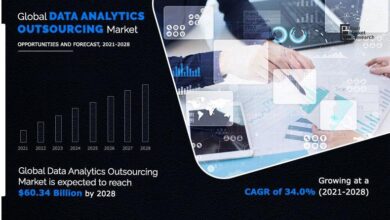The Impact Of Digitisation And Data Analytics On Claims Handling

Digitisation, Data Analytics, Technological Advancement
By Sarbvir Singh,
Insurance, at its core, is an intangible promise for a financially secure future. A promise that delicately hinges on the moment of truth – or claims – as they are known. While the ideal situation for both insurers and policyholders is to never arrive at such circumstances, the reality is that claims experience goes on to define consumer’s trust in insurance. So, it’s of utmost importance that the claims process must uphold the highest standards of thoroughness and precision with no room for error.
Fortunately, claims management has undergone a profound transformation. Technological advancements and the integration of data analytics have drastically reduced turnaround time with increased operational efficiency and accuracy. Here’s deep diving into how this continues to empower every stakeholder to navigate the complexities of claims with insight and agility.
New-age tech bridges traditional gaps
Traditionally, claims handling has been a labour-intensive process. Volumes of paperwork, manual assessments and time-consuming processes would prolong the turnaround time. Not to mention, this allowed room for biases or even collusion, besides human error. However, that swiftly changed with technology. It streamlined workflows and helped enhance productivity that expedited the claims handling process. For instance, damage assessment has been made a lot better with technology like self-inspection and image recognition that enables insurers to assess the damage remotely. Policyholders can submit photos or videos of the damage, and AI algorithms can analyse these visuals to estimate repair costs and assess the extent of the damage. This helps in reducing administrative overheads and improving overall efficiency.
Another crucial gap being bridged by technology is seamless flow of communication between stakeholders. Through online portals and mobile applications, policyholders can effortlessly submit claims, upload supporting documents, and track the status of their requests in real-time. Apart from this, NLP or Natural Language Processing has also been a game-changer in ensuring smooth flow of communication in vernacular languages, especially for a country like India.
Although there are still areas within claims handling that experience fragmented processes, it’s important to recognize that technology is continuously advancing. With each advancement, newer, more innovative solutions are being implemented to address these issues. As technology evolves, it provides opportunities to mend broken journeys within claims handling.
Insights-rich data helps reach fairer conclusion
The power of data insights can now truly be harnessed to drive informed decision making. By accurately analysing historical claims data, insurers can identify emerging trends, assess risk exposures, and optimise resource allocation much better. Predictive analytics, in particular, has been helpful for insurers to anticipate potential claims events. Through advanced algorithms and machine learning models, insurers can automate claims triaging, flagging suspicious patterns or anomalies for further investigation. This not only expedites the resolution process but also minimises the risk of fraudulent claims, safeguarding the financial integrity of insurance providers. If we speak specifically about the Indian market, given the diverse nature of fraudulent activities, AI systems are trained on local data to recognise the patterns.
This also helps insurers to accurately implement dynamic pricing strategies, tailoring premiums based on individual risk profiles and claims histories. By leveraging predictive modelling techniques, insurers can accurately assess risk probabilities and align premiums with the underlying risk exposure. This not only enhances precision but also promotes market competitiveness, as insurers can offer more personalised and cost-effective coverage options to policyholders. At a broader level, this helps formulate proactive risk mitigation strategies and loss prevention measures.
Challenges and opportunities that lie ahead
Claims are not only a critical component of insurance, but a really complex one too. While technology has come to the rescue of several consumer pain points, it’s important to acknowledge that not everything can be automated or controlled. Insurance sees the involvement of multiple stakeholders and so it’s possible that unavailability of automation at one touchpoint might lead to an oversight at another. For instance, many hospitals still rely on manual processes for health claims. However, there’s a promising trend towards automation, making the future look brighter.
Another focus area is to ensure absolute data privacy and security, safeguarding sensitive information against unauthorised access or cyber threats. Robust encryption protocols, stringent access controls, and ongoing cybersecurity training are essential to mitigate the risks inherent in digital transformation. Also, there’s a need to recognise the importance of the human-in-the-loop framework or ensuring mechanisms for human intervention where needed. Ultimately, biases might find a way to seep into AI’s decision making power too so it shouldn’t overpower human capabilities.
(Disclaimer – The author is Joint Group CEO, PB Fintech. Views expressed are personal and do not necessarily represent the official position or policy of the outlook Media Group or Its employees. )



